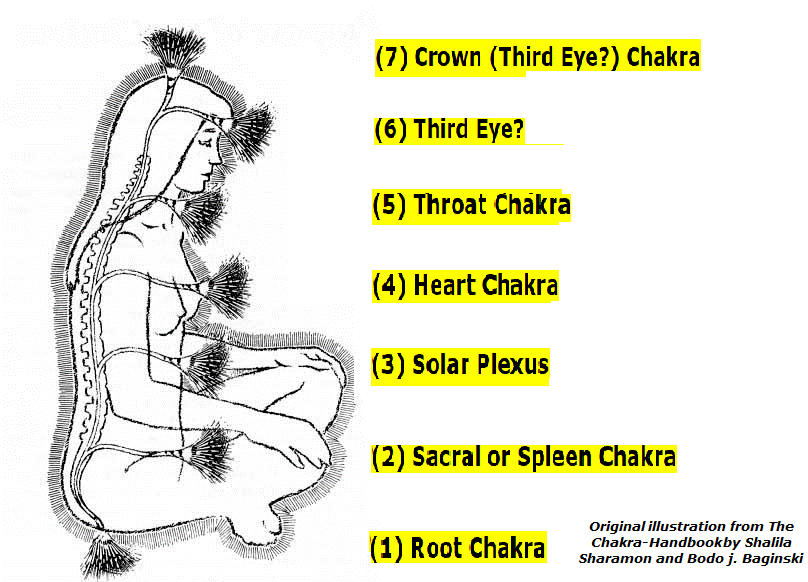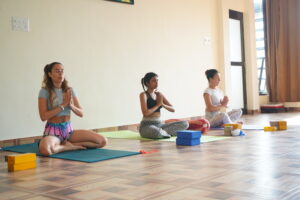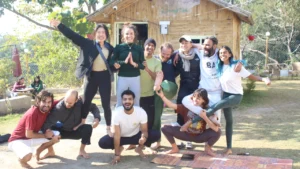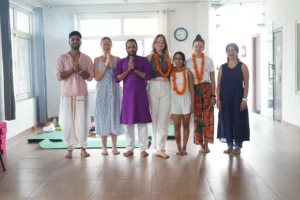Kundalini Yoga is a powerful and transformative style of yoga that focuses on the awakening of the “kundalini energy” that is believed to be located at the base of the spine. The word “kundalini” means “coiled,” and it is often used to describe the dormant energy that is said to reside at the base of the spine. The practice of Kundalini Yoga is designed to awaken this energy and channel it upward through the chakras (energy centers) in the body.
Kundalini Yoga classes typically include a combination of physical postures, breathing exercises, and meditation. The physical postures, or kriyas, are often vigorous and are designed to stimulate the nervous system, build strength and flexibility, and balance the body’s energy. Kriyas are specific sequences of movements, breath, and sound that are designed to stimulate the nervous system and to balance the flow of energy in the body.
Breathing exercises, or pranayama, are also an important part of Kundalini Yoga. The breath is used as a tool to access and balance the flow of energy in the body. The breathing exercises are specifically designed to bring more oxygen to the cells, to cleanse and strengthen the nervous system, and to balance the flow of energy in the body. These practices can be intense and can cause a feeling of heat or tingling in the body.
Meditation is also an essential part of Kundalini Yoga practice. Kundalini Yoga meditation techniques are designed to focus the mind, calm the emotions, and promote a sense of inner peace and well-being. These techniques include mantras, visualization, and concentration. The meditation practices are designed to help practitioners achieve a state of deep relaxation, to focus on the mind, and to promote spiritual growth and self-realization.
The main goal of Kundalini Yoga is to awaken the dormant energy located at the base of the spine and to channel it upward through the chakras, which is believed to lead to spiritual growth and self-realization. This process is said to be able to help practitioners achieve a sense of inner balance and harmony, and to promote physical, mental, and emotional well-being.
It’s important to note that Kundalini Yoga can be intense, both physically and emotionally, and it is not recommended for everyone. It is important to be in good health and to have a strong desire for self-awareness before undertaking the practice, and it is recommended to practice under the guidance of a qualified Kundalini Yoga teacher. Kundalini Yoga can be a powerful tool for personal growth and self-discovery, but it is important to approach, it with caution and respect.
In conclusion, Kundalini Yoga is a powerful and transformative style of yoga that focuses on the awakening of the “kundalini energy” that is believed to be located at the base of the spine. The practice of Kundalini Yoga includes a combination of physical postures, breathing exercises, and meditation, and it is designed to awaken this energy and channel it upward through the chakras. The goal of Kundalini Yoga is to promote spiritual growth and self-realization, and to help practitioners achieve a sense of inner balance and harmony, and to promote physical, mental, and emotional well-being. It’s important to be in good health and to have a strong desire for self-awareness before undertaking the practice, and it is recommended to practice under the guidance of a qualified Kundalini Yoga teacher.
The Seven Chakras: Energy Centers of the Body
The concept of chakras originates from ancient Indian philosophy, and the chakras are believed to be the energy centers that govern the physical, emotional, and spiritual aspects of our being. There are seven main chakras, each corresponding to different parts of the body and aspects of life. The goal of Kundalini Yoga is to awaken the dormant energy at the base of the spine and allow it to move upward through these chakras, leading to a state of balance, enlightenment, and self-realization.
Here’s a brief overview of the seven chakras:
1. Root Chakra (Muladhara)
- Location: Base of the spine, near the tailbone
- Color: Red
- Element: Earth
- Mantra: Lam
- Focus: Stability, grounding, survival, and physical identity
- Imbalance Symptoms: Fear, insecurity, instability
- Balanced State: Feelings of safety, security, and a strong sense of belonging
The Root Chakra is your foundation and is closely tied to your sense of survival and stability. In Kundalini Yoga, this chakra is the starting point for the upward flow of energy. When this chakra is balanced, you feel grounded and connected to the physical world, allowing you to face challenges with strength and resilience.
2. Sacral Chakra (Svadhisthana)
- Location: Lower abdomen, below the navel
- Color: Orange
- Element: Water
- Mantra: Vam
- Focus: Creativity, sexuality, emotions, and relationships
- Imbalance Symptoms: Guilt, emotional instability, lack of creativity
- Balanced State: Healthy relationships, creative expression, emotional flow
The Sacral Chakra governs your emotional life, creativity, and relationships. It is associated with the ability to feel pleasure and joy. When balanced, it allows you to express your emotions freely, experience healthy relationships, and foster creativity in all aspects of life.
3. Solar Plexus Chakra (Manipura)
- Location: Upper abdomen, around the stomach area
- Color: Yellow
- Element: Fire
- Mantra: Ram
- Focus: Personal power, self-confidence, willpower, and metabolism
- Imbalance Symptoms: Low self-esteem, lack of direction, digestive issues
- Balanced State: Confidence, self-worth, and control over one’s destiny
The Solar Plexus Chakra is the center of personal power and confidence. This energy center governs your sense of identity, self-esteem, and your ability to take action. When this chakra is balanced, you feel empowered, confident, and have the courage to follow your dreams.
4. Heart Chakra (Anahata)
Location: Center of the chest, near the heart Color: Green Element: Air Mantra:Yam Focus: Love, compassion, forgiveness, and healing Imbalance Symptoms: Isolation, lack of empathy, difficulty with relationships Balanced State: Unconditional love, compassion, emotional healing
The Heart Chakra is the seat of love, compassion, and emotional healing. It is through this chakra that we experience unconditional love for ourselves and others. When the Heart Chakra is open, it leads to compassion, forgiveness, and a deeper connection to others.
5. Throat Chakra (Vishuddha)
- Location: Throat, neck, and jaw
- Color: Blue
- Element: Ether (Space)
- Mantra: Ham
- Focus: Communication, self-expression, and truth
- Imbalance Symptoms: Fear of speaking, difficulty expressing oneself, throat issues
- Balanced State: Clear and honest communication, self-expression, and speaking one’s truth
The Throat Chakra is associated with communication and self-expression. This chakra governs our ability to speak our truth, both literally and figuratively. A balanced Throat Chakra allows for honest expression and the ability to listen to and be heard by others.
6. Third Eye Chakra (Ajna)
- Location: Forehead, between the eyebrows
- Color: Indigo
- Element: Light
- Mantra: Om
- Focus: Intuition, wisdom, insight, and mental clarity
- Imbalance Symptoms: Lack of clarity, confusion, disconnection from intuition
- Balanced State: Clear vision, deep insight, spiritual awareness
The Third Eye Chakra is the center of intuition and inner vision. When this chakra is open, it allows us to see beyond the physical world and connect to our higher self. It governs our perception, intellect, and spiritual insight.
7. Crown Chakra (Sahasrara)
- Location: Top of the head
- Color: Violet or White
- Element: Cosmic Energy
- Mantra: Silence or Om
- Focus: Spiritual connection, higher consciousness, and enlightenment
- Imbalance Symptoms: Lack of purpose, disconnection from spirituality, confusion about life’s meaning
- Balanced State: Spiritual enlightenment, connection to the divine, universal consciousness
The Crown Chakra is our connection to the divine, the universe, and higher consciousness. It is the chakra of enlightenment and spiritual awakening. When open, it allows us to feel a deep sense of connection to everything and everyone, transcending the ego and experiencing oneness with the universe.
Is Kundalini Yoga Right for You?
While Kundalini Yoga can be incredibly powerful, it’s important to approach the practice with respect and mindfulness. The intensity of the practice may not be suitable for everyone, and it’s recommended to practice under the guidance of a qualified teacher, especially if you are new to this style of yoga.
If you are in good health, have a strong desire for self-awareness, and are open to spiritual growth, Kundalini Yoga may be a transformative practice for you. With regular practice, you can begin to experience a greater sense of balance, peace, and connection to the world around you.








